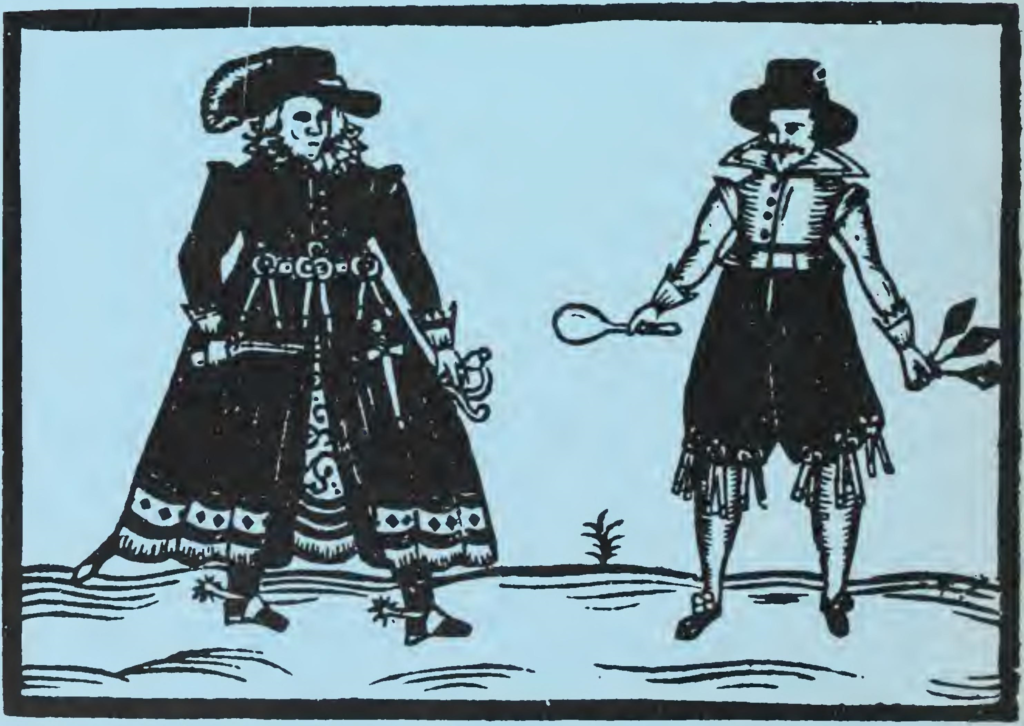Lee Raye
In early modern England, the wonder book provided a vernacular genre that collected stories of monsters, marvels and prodigies. Although the books had a veneer of scholarly respectability, their contents were closely linked to popular pamphlets, ballads and chapbooks. Tales of wonder were gathered wherever the authors could find them – medical and legal case studies, academic accounts and classical sources from England and beyond – and readers could then deploy them as conversation starters. The genre was not unique to England and wonder books circulated throughout North America and across Europe, gaining popularity as French livret bleu and German volksbuch. In the seventeenth century, ‘persons who have changed their sex’ became a popular chapter topic in the English wonder books.

The texts that discussed changing sex catered to the same curiosity satisfied by public performances and showings of ‘hermaphrodites’. They may also have thrilled readers not just because they fetishised queer bodies, but because they challenged the idea that gender was immutable by presenting examples of how people could change their sex. If people had unexpectedly changed sex before, it could happen again. The chapters’ examples were almost exclusively of women who changed into men. A typical story is that of Franciscus and Carolus:
In the time that Ferdinand the first was King of Naples, one Ludovicus Guarna a citisen of Salern, had fiue daughters, of which the two eldest were called Francisca and Carola; either of which at fifteene yeares of age found such alteration in themselues, that they changed their foeminine habits, and names also, the one being called Franciscus, the other Carolus.
The original medical report makes it clear that Franciscus and Carolus developed penises at puberty, and this was such certain proof to contemporaries that their sex had changed that they transitioned to living as men. The discovery of a penis in adolescence or on a wedding night seems to have been a common theme in the stories of women who changed into men. Philotis of Smyrna discovered a penis on the night of the wedding when ‘those parts which were inverted and conceal’d, began to appear, and she rose in the Morning of a contrary Sex.’ Germane Garnier discovered his penis when he ‘leaped violently over a ditch, whereby it came to pass that the staies and foldings being broken, his hidden members suddenly broke forth’. During the early modern period, scholars and laypeople alike sometimes thought that women could become men due to an excess of hot humours such as might be produced when running and jumping over a ditch, or due to too much desire in sex. As Thomas Johnson (translating Ambrose Paré) described in 1665: ‘Certainly women have so manie and like parts lying in their womb, as men have hanging forth; onely a strong and livelie heat seem’s to bee wanting, which may drive forth that which lie’s hid within.’
However, changing sex (as depicted in wonder books) did not always depend on the unexpected appearance of a penis. Take the case of Magdalena Mognoz. Seven years after becoming a nun, so presumably later in life than our previous examples, Magdalena was ‘from a woman turn’d into a man’. The evidence given for this is that ‘she put on men’s cloaths; a Beard grew upon her chin, and she was called Fraciscus Mognoz’. The sex change was again surprising, but if it coincided with the sudden appearance of a penis, this was not thought worth mentioning.
Similarly, one wife living near Beneventum in Spain left an abusive marriage by stealing one of the husband’s suits and sneaking out ‘to seek out a more peacable fortune elsewhere’. Interestingly, this cross dressing in itself was seen as performative. It was only after some time that the protagonist actually went through a change of sex: ‘she found a notable alteration in herself, insomuch, that she who had been a Wife, desired to perform the office of a Husband. She marry’d a Woman in that place where she had retired herself’. The gender model in use here is not bio-essentialist; what made the protagonist a man in the end was his desire, his role as a husband and his relationship to women.
It is interesting to compare this story to the story of Philotis of Smyrna presented above. It seems that women with penises were no longer women, but men may not necessarily have needed penises to be men. This might explain why Paré/Johnson believed that women could change into men, but men could never change into women. Such wonder books give only a single, very short account of a man who changed into a woman, suggesting that authors understood it to happen but it was either not as common or not as interesting.

The category of ‘persons who have changed their sex’ in the wonder books cannot be exactly matched onto any modern term, though such early modern phenomena include people who might identify today as intersex and/or trans. The stories of these people were collected for sensationalism and fetishisation; most readers found them exciting and strange rather than dangerous or deluded. However, underneath the commentary of the wonder books, one finds acceptance of changing sex as a surprising natural phenomenon. While such transformations were wondrous, the accounts do not often veer towards demonisation of the people who changed their sex. Thomas Heywood in fact refutes the idea that ‘the mutation or change of sex’ is one of the ‘fallacies of the Diuell’, and emphasises that ‘many natural reasons may be given’. Perhaps Nathaniel Wanley put it best: ‘Nature seems to be so in love with change, that she will have nothing here in this World, to rest in a continued and constant state.’
 Lee Raye is a historian of science researching animal and plant histories, and a Fellow of the Linnean Society. They are currently researching the natural histories of early modern Britain and Ireland. They tweet from @LeafyHistory.
Lee Raye is a historian of science researching animal and plant histories, and a Fellow of the Linnean Society. They are currently researching the natural histories of early modern Britain and Ireland. They tweet from @LeafyHistory.

NOTCHES: (re)marks on the history of sexuality is licensed under a Creative Commons Attribution-NonCommercial-NoDerivatives 4.0 International License.
Based on a work at www.notchesblog.com.
For permission to publish any NOTCHES post in whole or in part please contact the editors at NotchesBlog@gmail.com




